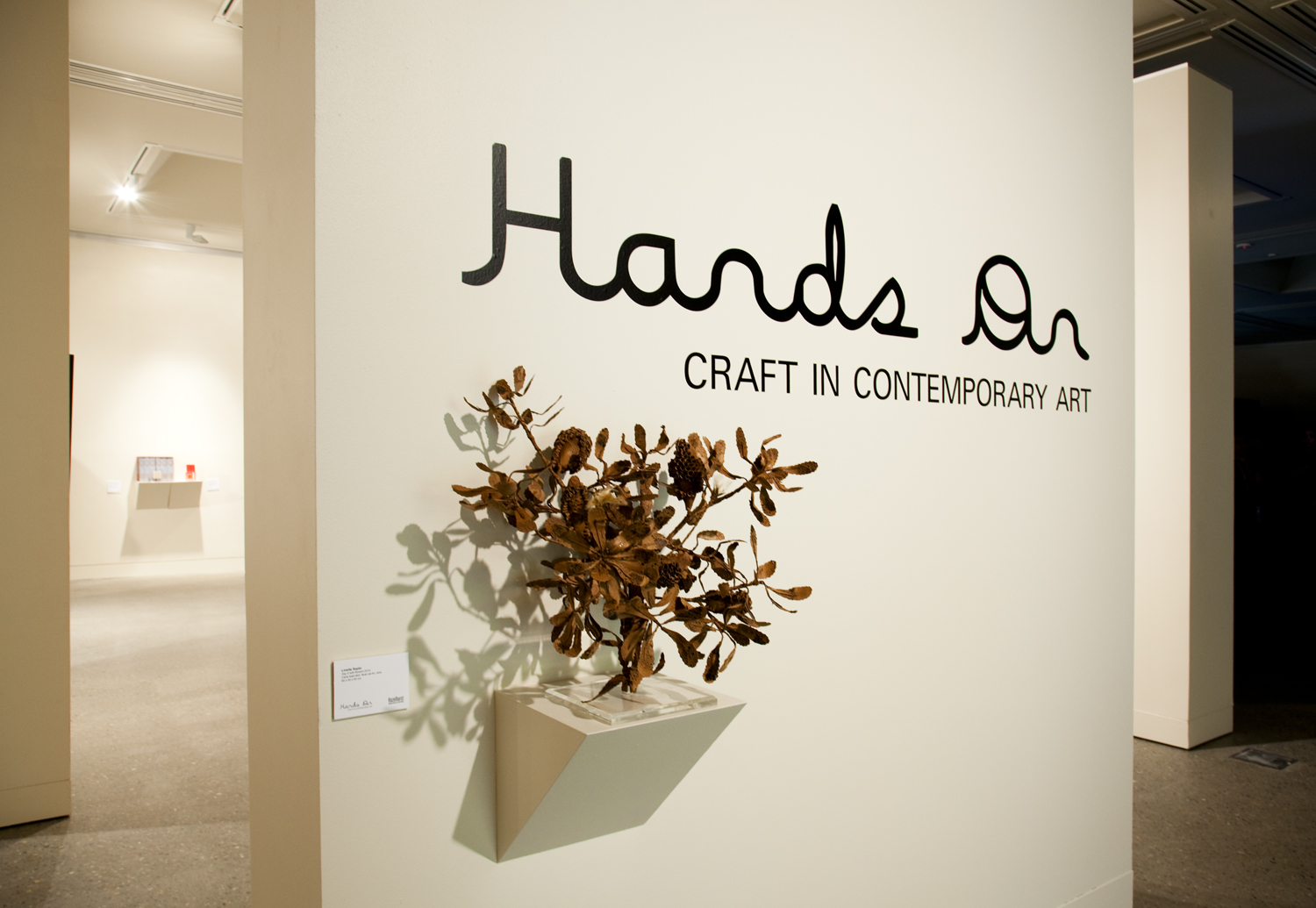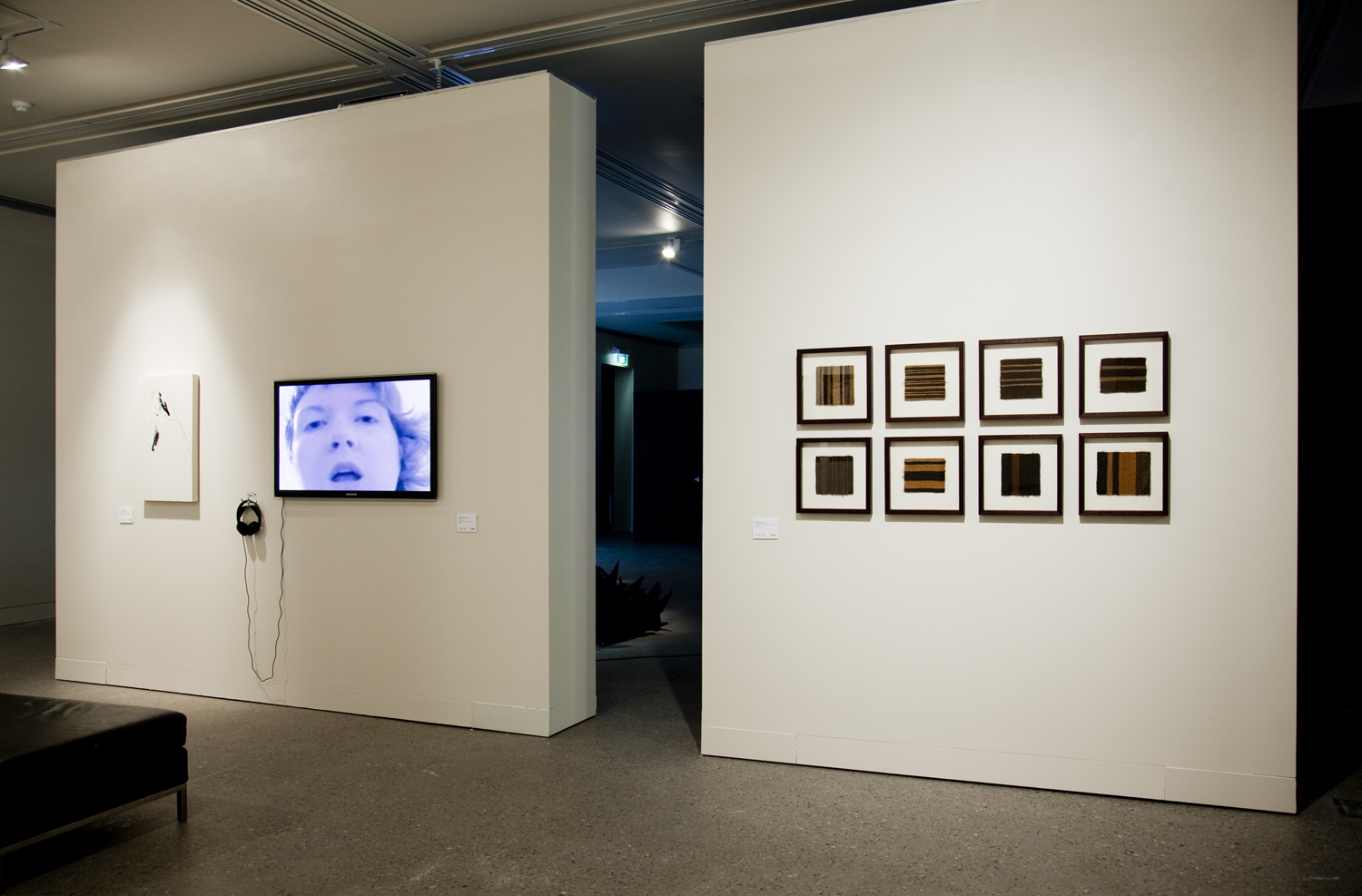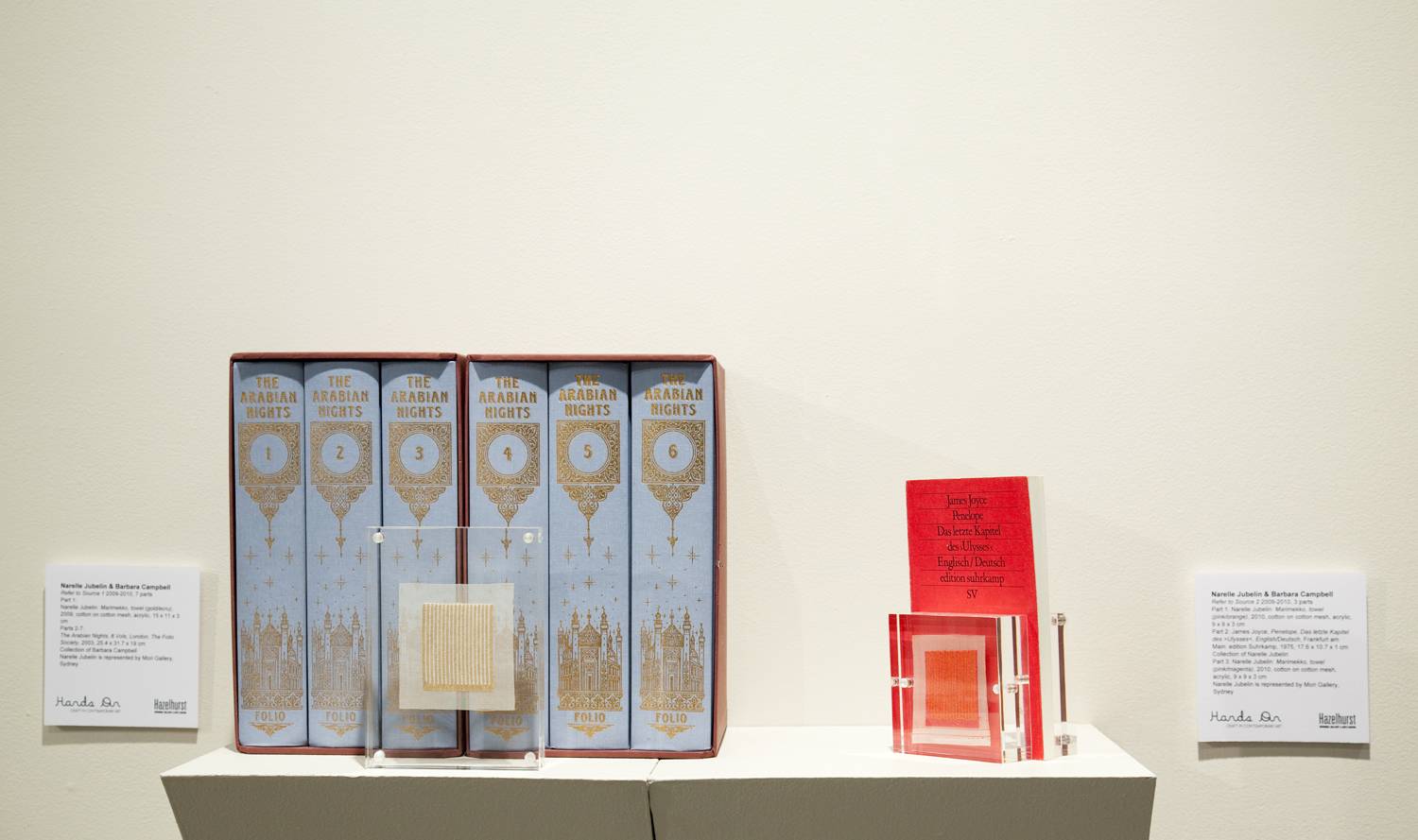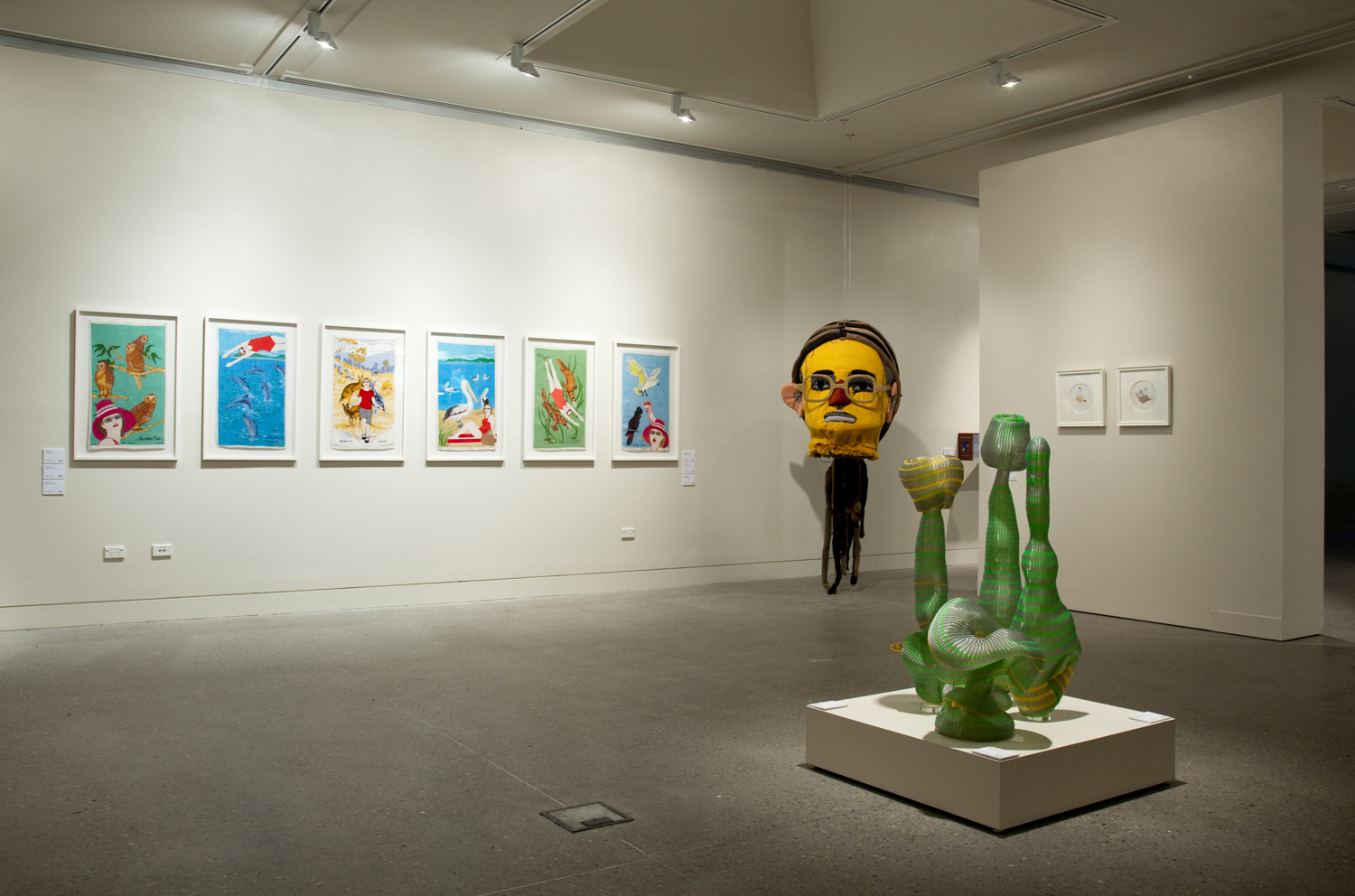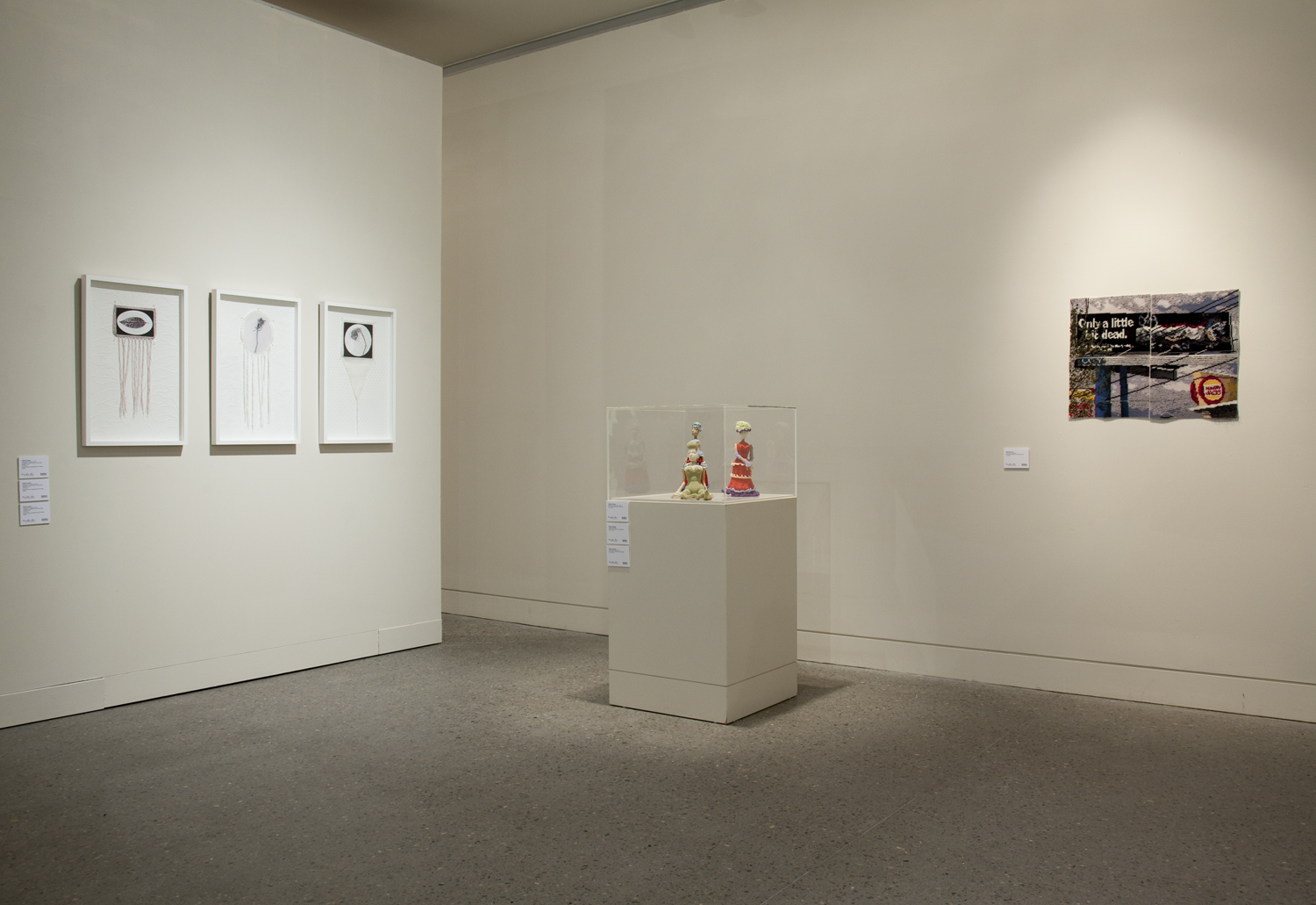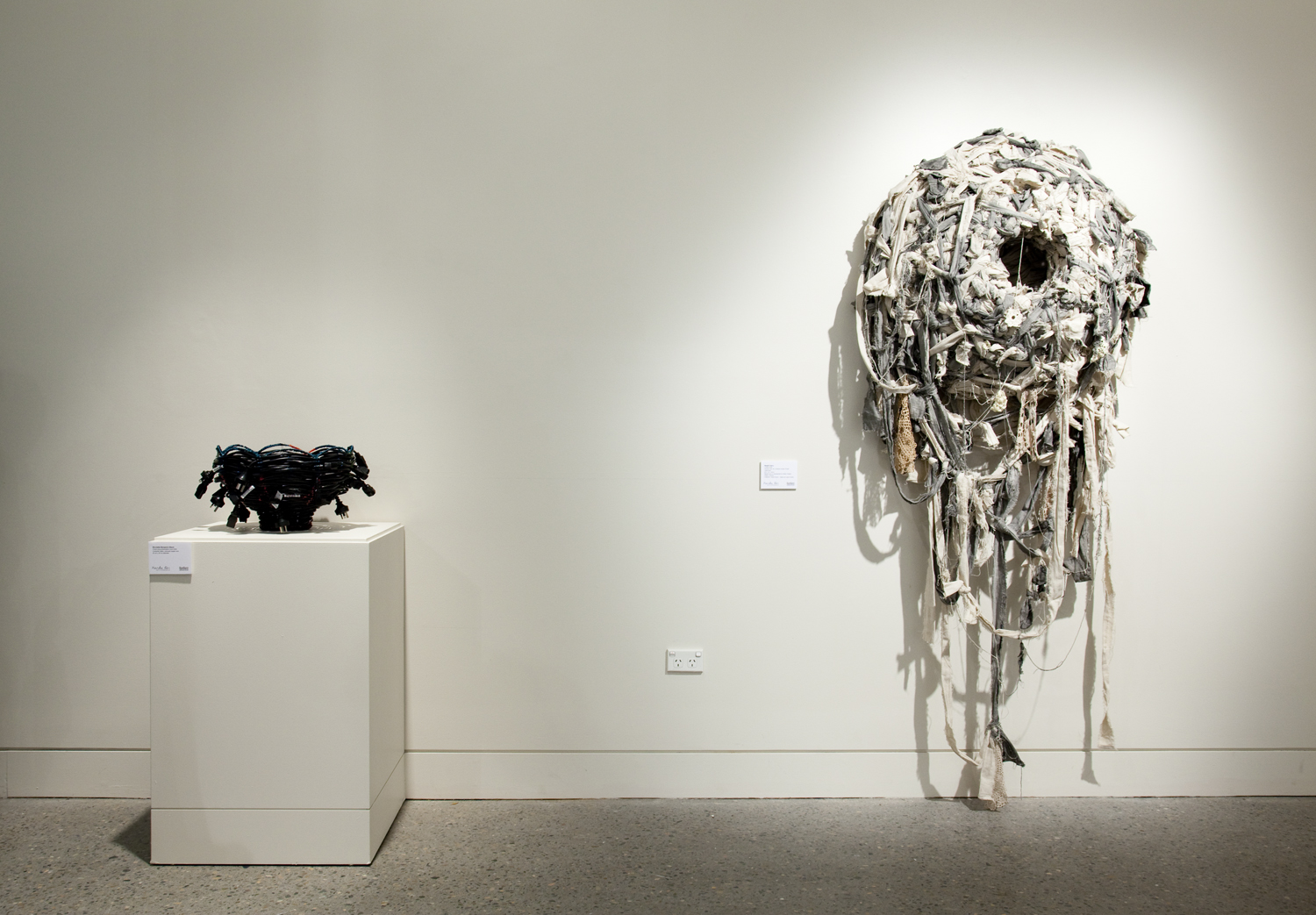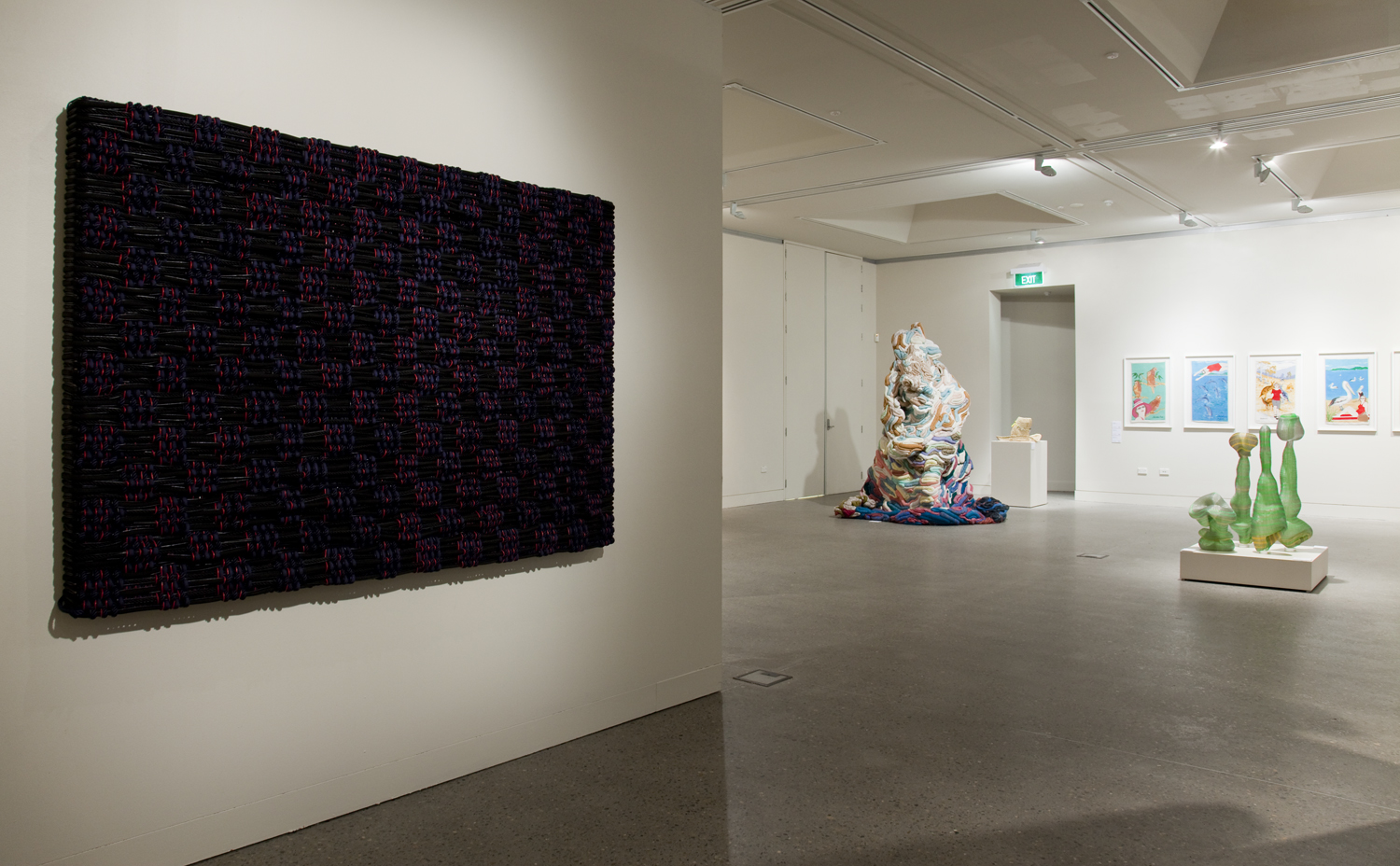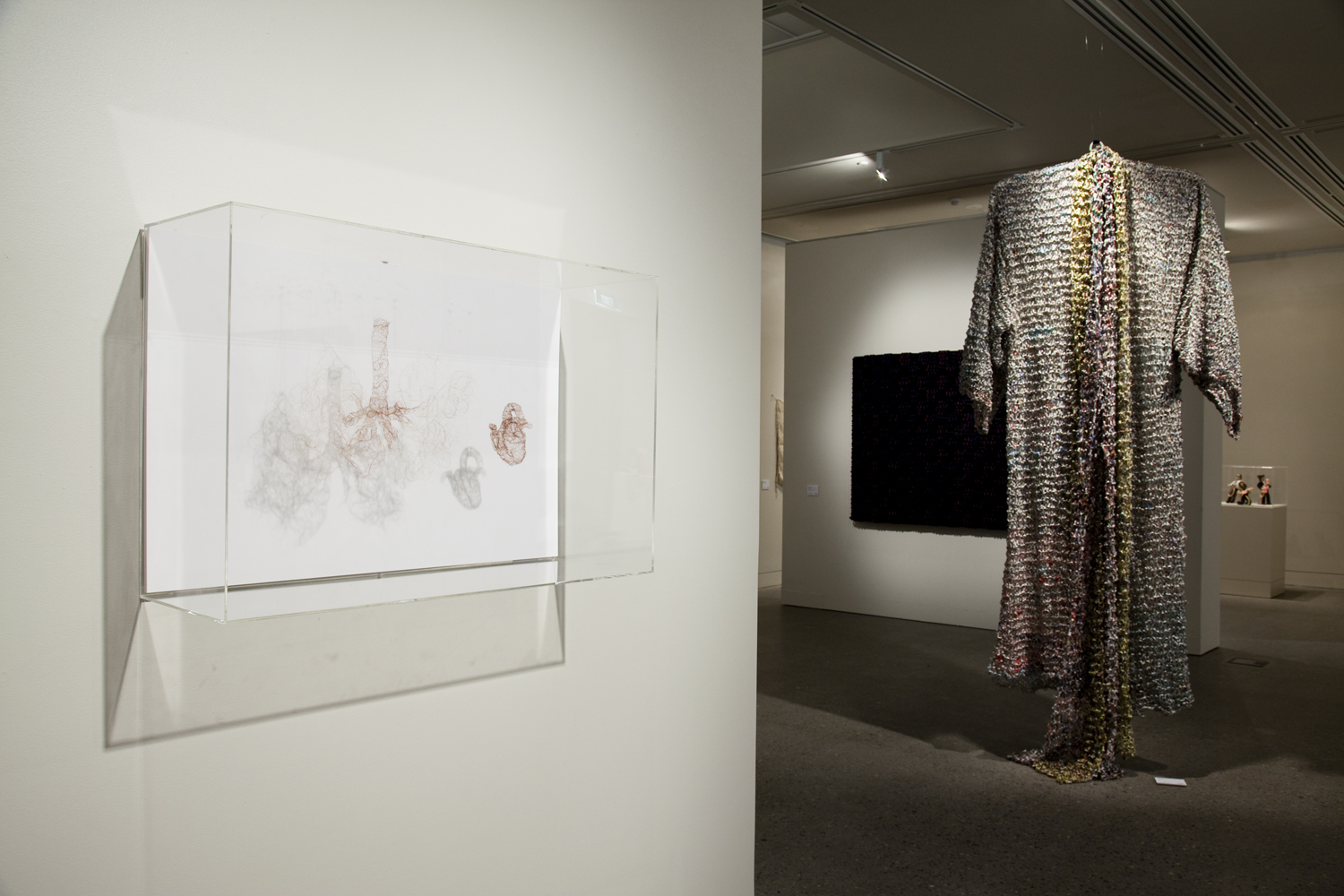4 December 2010 to 30 January 2011
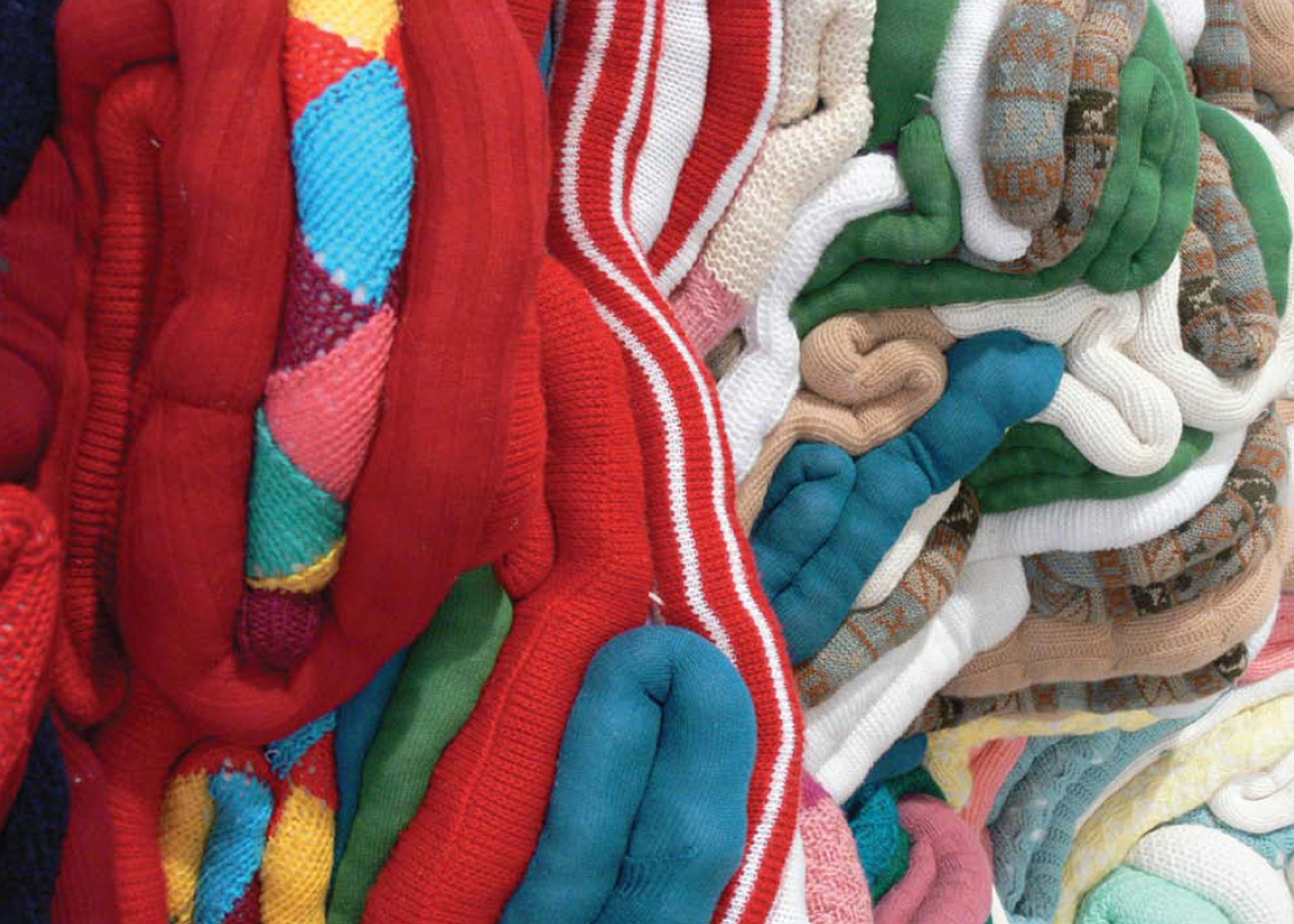
Image: Alice Lang Auropod (detail), 2010, recycled sweaters, wadding, yarn. Image courtesy the artist and Gilligan Grant Gallery, Melbourne.
The show incorporated a rich variety of materials, including recycled plastics, yachting ropes, yarn, human hair, leather, recycled fabrics and natural grasses. From knitting and leather craft to tapestry and weaving, an array of unlikely, or even denigrated methods, were used with great skill, and often wit, to produce works of depth, meaning and cultural relevance.
Hands On : Craft in Contemporary Art featured the work of 28 local and regional emerging artists, as well as internationally acclaimed artists. While many of these artists also utilised other modes of production such as video, performance and digital media in their practice, this exhibition focuses solely on their 'hands on' approach and rationale.
Local artist Silke Rateze used needlepoint to produce her Mayflower series, an "autobiographical celebration" of her experiences on RSVP, an on-line dating service. Using traditional samplers, similar to those that previous generations of women produced for their glory boxes or family home, Raetze played unexpected games with something that holds a conservative history.
Another local artist, Betty Bird, loves working with paper and is always experimenting to find different ways to use it. In her extremely labour-intensive work titled Phone Book Fashion, Bird hand knitted a garment using white and yellow pages telephone books, along with pages from (local newspaper) The Leader for the scarves. The resulting sculptural work was lacey, soft, serene - cobweb-like in its suspended fragility.
Bridie Connell also makes use of recycling and reinvented domestic objects. Her work combined personal and fictional narratives with a good dose of dark humour, to explore representations of women and femininity in art and popular culture. Hanky Panky Fiction was a series of personalised 1950s and vintage handkerchiefs hand embroidered with the titles and tag lines from men's adventure novels (pulp fiction publications) from the same era.
Adrienne Doig is another artist who incorporated embroidery in her work, superimposing her self-portrait across images on tea towels. The choice of materials and the 'anti-style' techniques of appliqué embroidery worked onto the kitsch imagery of the tea towels created a kind of patchwork image, which accentuated the humour and also made obvious the fictional nature of portraiture.
Portraits and figurative elements also featured in the work of Alan Jones. Sewing and stitching soft sculptures has become an integral part of his practice. Working on location, and using recycled fabrics, Jones created sculptural works that were predominantly figurative and relevant to their location and environment.
By contrast, Helen Pynor worked on a much smaller scale and created knitted hair sculptures from knitted single strands of hair tied end to end to end. In her work Untitled (heart lungs) Pynor used human hair to create hidden and secret internal biological structures, rendering the hair "out of place". The displaced hair became a vehicle for upturning received categories such as inside-outside and visible-invisible.

